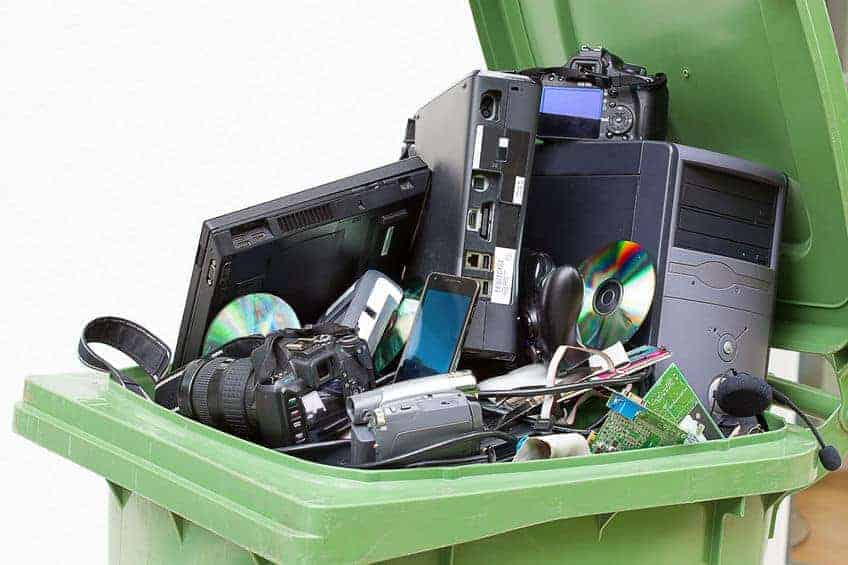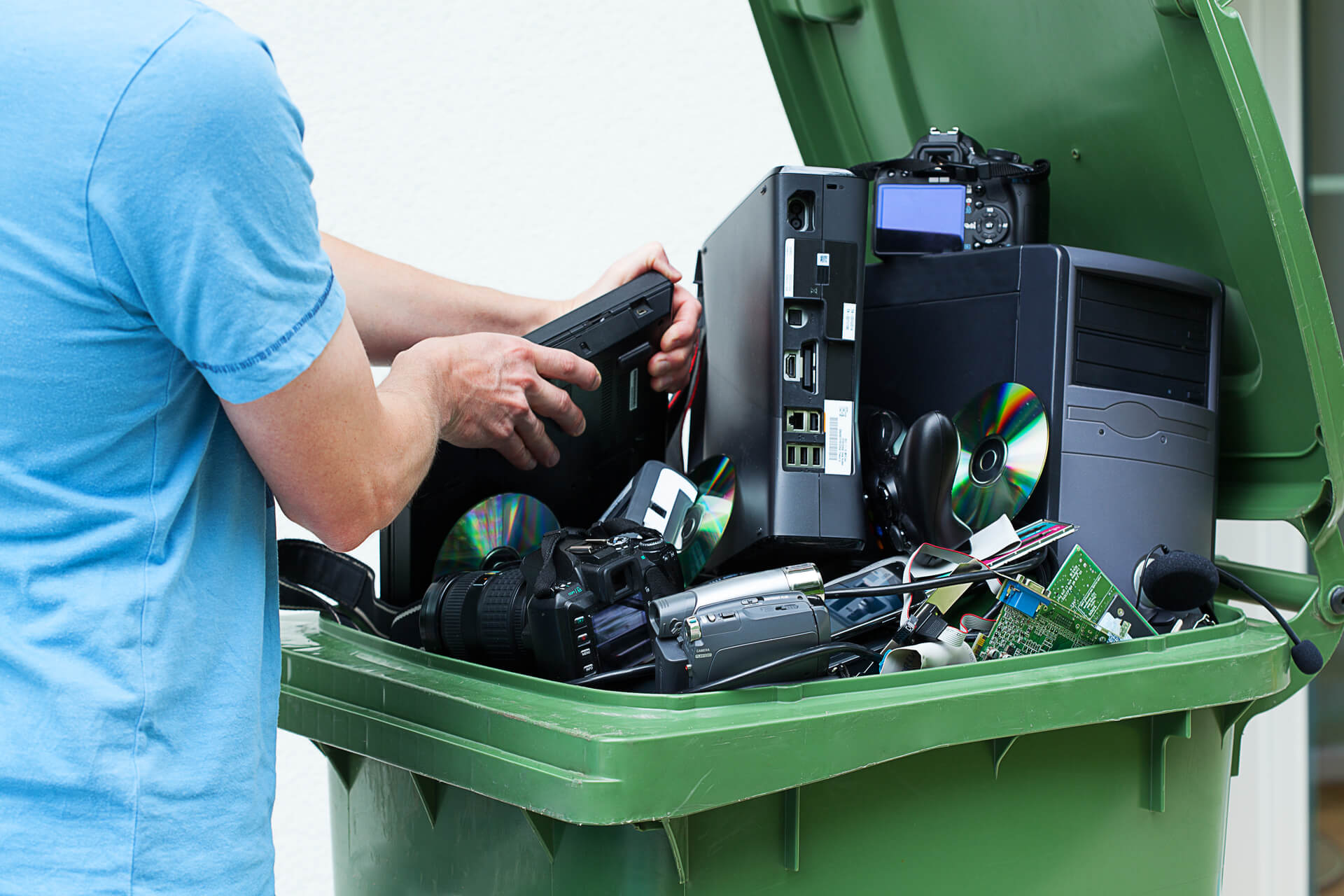Elevate Your E-Waste Monitoring With R2 Certification: a Comprehensive Review
One trick method to raise e-waste administration practices is by acquiring R2 qualification. By checking out the benefits and procedures associated with R2 qualification, a deeper understanding of exactly how it can transform e-waste monitoring techniques emerges, losing light on a path in the direction of sustainability and moral disposal techniques.
Value of E-Waste Monitoring

When e-waste is not taken care of appropriately, these harmful compounds can permeate right into the environment, creating injury to wild animals and potentially going into the food cycle, posing risks to human health. The inappropriate disposal of e-waste adds to contamination and greenhouse gas emissions, worsening climate adjustment and ecological degradation.

Advantages of R2 Accreditation

First of all, R2 qualification improves credibility by showcasing a company's dedication to lasting practices. It guarantees customers, companions, and stakeholders that the firm sticks to rigorous requirements for e-waste monitoring - r2 certification. This integrity can lead to raised count on and enhanced relationships with clients that focus on environmental obligation
Second of all, R2 accreditation aids reduce threats connected with improper e-waste disposal. By complying with the strict guidelines established forth by the qualification, organizations can lessen the likelihood of data violations, ecological contamination, and legal consequences. This positive strategy safeguards the firm's reputation and minimizes potential liabilities.
Last but not least, R2 accreditation shows a commitment to environmental stewardship - r2 certification. By properly managing digital waste through certified procedures, organizations add to the preservation of sources, decrease of contamination, and promo of a round economic situation. This dedication not just profits the setting yet additionally straightens with advancing customer assumptions for lasting service methods
R2 Accreditation Process Summary
Having established the advantages of R2 qualification in advertising reputation, threat reduction, and environmental stewardship, it is vital to now describe the comprehensive process associated with getting this accreditation. The R2 accreditation process starts with a comprehensive review of the company's functional policies and procedures to make certain compliance with the R2 standard. This first evaluation is important in identifying any kind of spaces that need to be addressed prior to proceeding better.
When the organization's techniques line up with the R2 standard needs, an independent third-party auditor carries out an on-site audit to evaluate the execution and efficiency of these techniques. This audit consists of a comprehensive testimonial of documentation, meetings with staff, and physical examinations of facilities to validate compliance.
Adhering to a successful audit, the company gets a qualification decision based upon the auditor's findings. If accepted, the organization is approved R2 certification, showing its dedication to accountable e-waste monitoring. It is necessary to keep in mind that maintaining R2 accreditation calls for continuous conformity with the standard's demands and routine audits to guarantee ongoing adherence to ideal methods in e-waste recycling and disposal.
Trick Criteria for R2 Conformity
An essential element of attaining R2 compliance is making sure that all digital waste (e-waste) processing facilities satisfy stringent environmental and security criteria. To abide by R2 requirements, organizations need to stick to key requirements that concentrate on responsible e-waste administration methods. These standards consist of implementing a documented environmental, wellness, and safety and security management system, guaranteeing the safe handling of data-containing tools, and performing comprehensive downstream due diligence to track the final destination of e-waste products.
In addition, R2 conformity demands the correct testing, repair, and recycling of digital devices to expand its beneficial life and lessen ecological impact. Facilities looking for R2 qualification have to likewise focus on worker health and wellness by supplying needed training, personal protective equipment, and a safe workplace. In addition, preserving comprehensive records of e-waste processing tasks and regularly undertaking audits by approved licensing bodies are vital components of showing continuous conformity with R2 criteria.
Effects of Sustainable E-Waste Practices
The execution of lasting e-waste practices in accordance with R2 conformity not only guarantees environmental and safety and security requirements are met but additionally substantially impacts the total lifecycle of electronic products. By sticking to R2 standards, digital waste administration procedures become our website a lot more efficient, decreasing the environmental impact of digital products. Sustainable e-waste practices help with the appropriate disposal of digital parts, guaranteeing that dangerous materials are dealt with sensibly and do not wind up polluting the setting.
In addition, lasting e-waste practices can add to work production in the recycling and repair industries, promoting financial development while advertising ecological duty. In general, the fostering of sustainable e-waste methods under R2 accreditation serves as a vital action towards accomplishing an extra environmentally lasting electronic devices sector.
Conclusion
To conclude, implementing correct e-waste administration methods is essential for environmental sustainability and resource conservation. R2 certification plays a key function in making certain responsible handling and disposal of digital check my source waste. By sticking website here to the strict criteria stated by R2 requirements, companies can not only minimize their environmental impact but additionally contribute to an extra sustainable future for generations to come.
One secret method to elevate e-waste management techniques is by attaining R2 accreditation. By exploring the processes and advantages linked with R2 certification, a deeper understanding of how it can reinvent e-waste management techniques arises, dropping light on a course towards sustainability and honest disposal practices.
The R2 certification procedure starts with a thorough testimonial of the company's functional policies and treatments to make sure compliance with the R2 standard. If approved, the company is approved R2 qualification, demonstrating its commitment to accountable e-waste monitoring. Generally, the adoption of sustainable e-waste practices under R2 qualification serves as an essential action in the direction of attaining a more environmentally sustainable electronics sector.